Since our previous Denmark Landscapes report in 2019, the Danish wine market has lost an estimated 17% of its monthly wine drinkers even though the adult population of the country has increased during this time. This could be the effect of moderation, especially amongst younger LDA drinkers, but also competition from other categories such as RTDs.
In terms of the pandemic, Denmark has effectively navigated the situation compared to some of its neighbours thanks to fewer restrictions and an effective vaccination programme. However, after being the first European Union country to remove their Covid-19-related restrictions, rising case numbers have led to calls for reintroducing measures to ease pressure on the healthcare system. This could lead to restrictions returning for the on-trade which would limit potential and short-term recovery.
Adding to this there is uncertainty amongst younger LDA consumers about their approach to the post-Covid world, especially around their future drinking plans. Four in ten 18-34–year-old monthly wine drinkers anticipate increasing their alcohol consumption, with 23% saying they’ll decrease it; suggesting a repertoire reset is taking place amongst them as the pandemic recedes.
German wine, however, seems to be a beneficiary of the pandemic. The country’s consumption level has risen significantly since 2017 in Denmark. We could attribute this to increased accessibility, distribution, and marketing efforts throughout the pandemic, as borders were shut and importing from other origins was limited. Furthermore, the markets’ proximity to each other means supply of German wine faced less disruption in the past year compared with sources further away from Denmark. Finally, the closure of in-person cross-border shopping with Germany, where taxes on wine are significantly lower than in Denmark, would have led to a repatriation of some German wine purchases normally not measured in Danish sales numbers.
Supermarkets have also been affected by Covid-19, having lost trade since 2018 as consumers migrated to buying their wine online. Pandemic restrictions such as limitations on the number of people in stores or general hesitations to leave home are likely responsible. However, trade interviewees suggest that supermarkets will bounce back once consumers return to their pre-pandemic behaviours.
Additionally, in terms of shopping attitudes, Danish wine consumers have become increasingly more price-conscious since 2018; they place greater importance on promotional offers when buying wine and have begun to perceive it as an expensive drink. This is in contrast with other markets such as the UK where British regular wine drinkers are showing a propensity to spend more per bottle in both the off- and on-trades, leading to premiumisation of wine that isn’t seen as obviously in the Danish market.
You may also be interested in reading:




Leave a Reply
Want to join the discussion?Feel free to contribute!